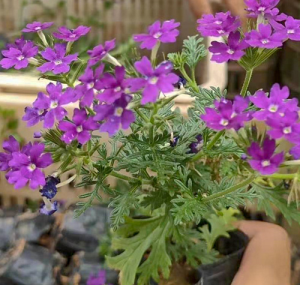Effects of Three Basic Points of Temperature on Perennial Flowers
Temperature affects the growth and development of perennial flowers. The higher, lower and suitable temperatures of flower growth and development, we call it the three basis points for the temperature of flower market growth and development. Under the suitable temperature, the flower growth is better. When the temperature gradually deviates from the suitable temperature, the flower growth is hindered. When the flower is serious, the flower cannot bloom. When the upper and lower temperature is exceeded, many flowers stop growing. The flower will die, and the temperature at the lower limit can also be called cold dead point and hot dead point. Understand the requirements of the three basis points for the temperature of flowers. Let us discuss the effect of temperature on the growth and development of flowers.
At different developmental stages, flowers have different temperature requirements. It requires a lower temperature during its seedling period, and as the seedlings grow longer, until the flowering and fruiting stage, the temperature requirement gradually increases. We all know that the annual flowers are sown in spring, and bloom and bear in summer and autumn, and then die. Then the natural temperature can just meet his requirements for growth and development. The seeds of biennial flowers need to be at a lower temperature. During seedlings, the temperature is required to be lower. Otherwise, they will not pass the vernalization stage smoothly. And when the flowering takes place, the temperature required is higher. The biennial flowers we learned earlier are autumn sowing flowers. The autumn temperature is relatively low. The seedling period happens to be in the colder winter. The flowering is strong and the temperature gradually rises in spring and summer. The temperature in natural conditions can just reach her flower buds. Differentiation. Different flowers require certain temperature conditions, and flowers of different origins have different temperature requirements for their flower bud differentiation. One type is flower bud differentiation under high temperature. Annual flowers, the types of flowers that bloom in summer and autumn in perennial roots, and most types of bulbous flowers require flower bud differentiation at higher temperatures. For example, flower bulbs such as gladiolus and canna, must be vernalized during the summer growth period, and plant flower bulbs such as tulips and hyacinths in autumn, and differentiate flower buds during the dormant period in summer. The other type is flower bud differentiation at low temperature. Some alpine flowers native to temperate central and northern regions require flower bud differentiation below 20 degrees, and some biennial flowers and perennial flowers blooming in spring also require flower bud differentiation when the temperature in spring is low.


